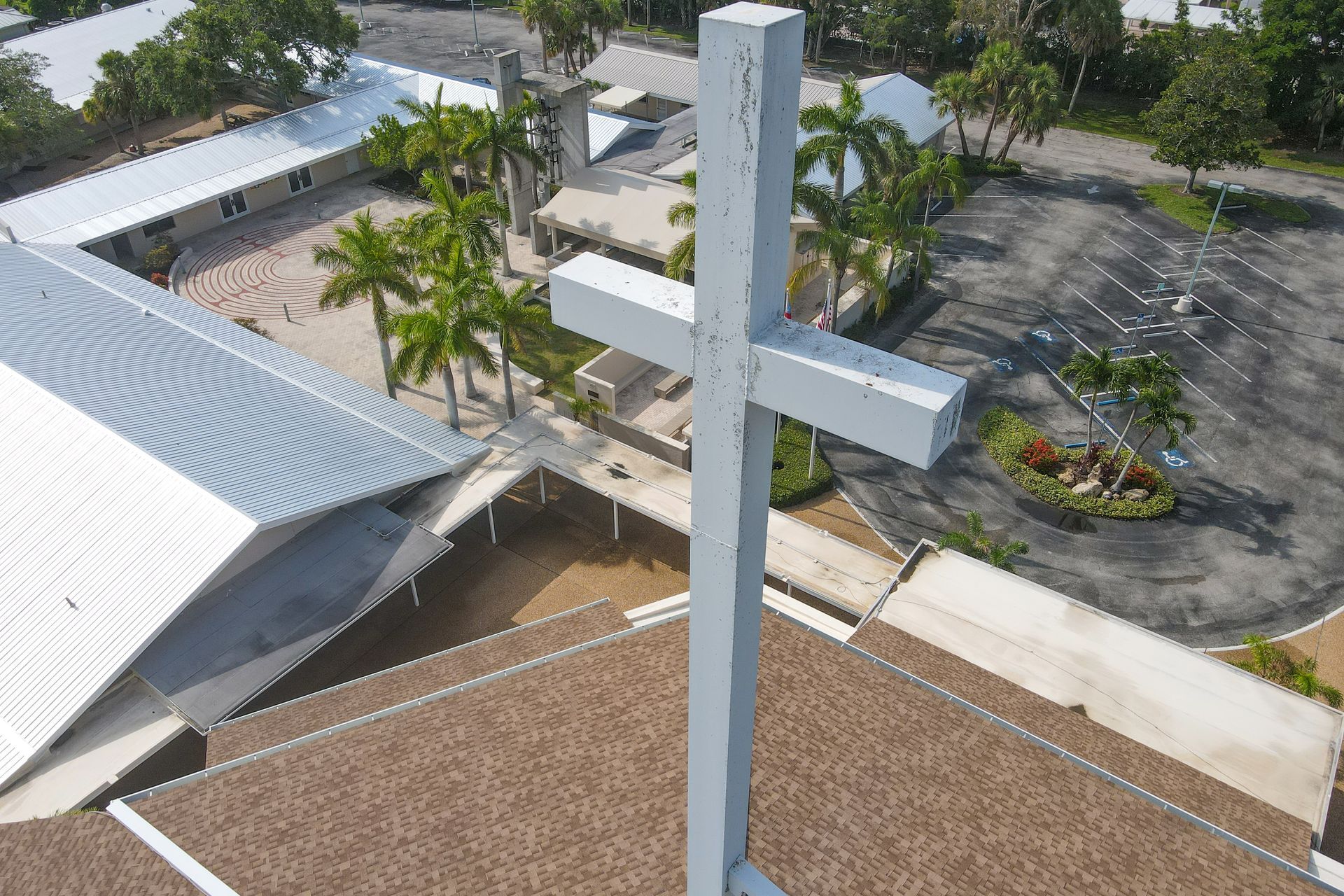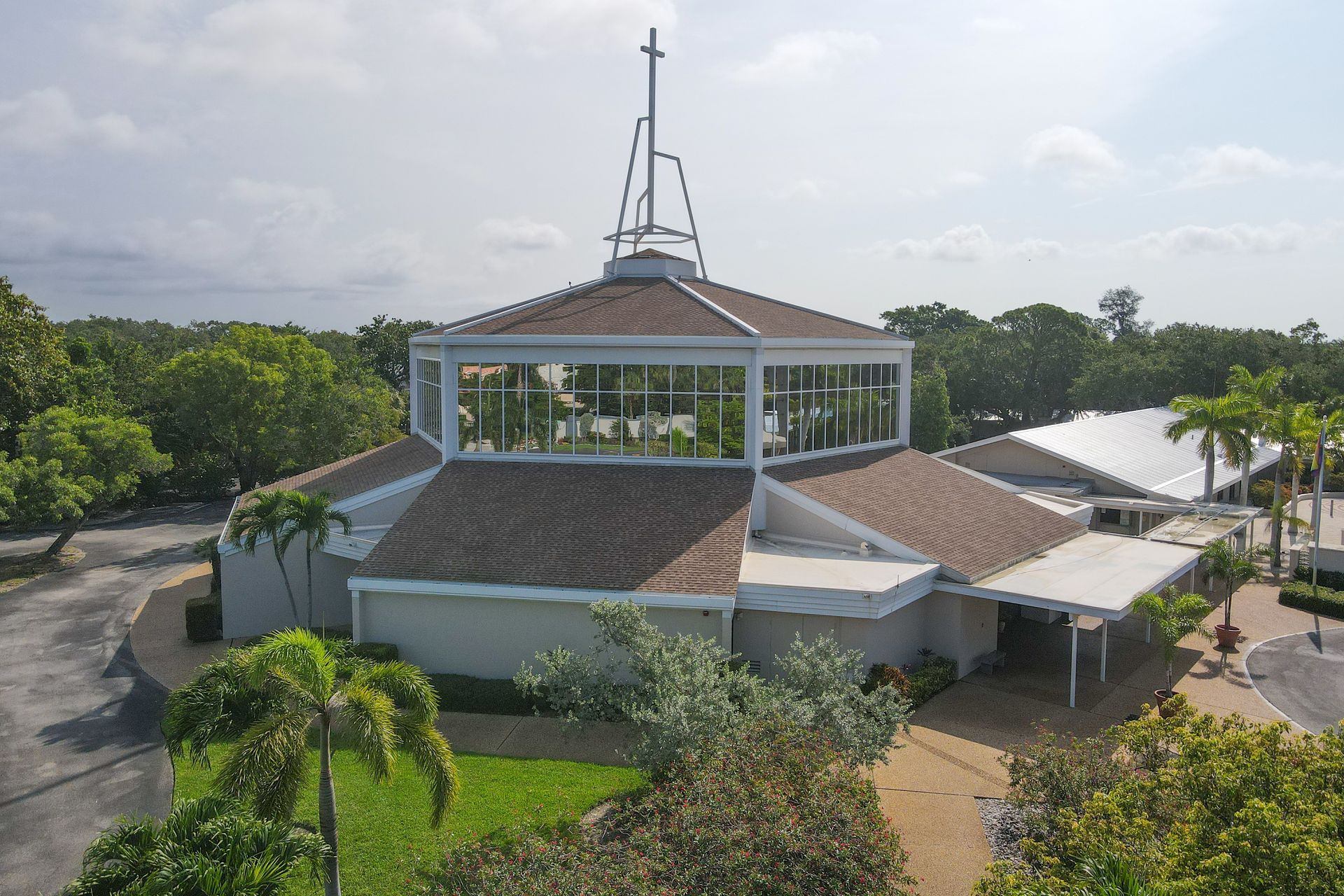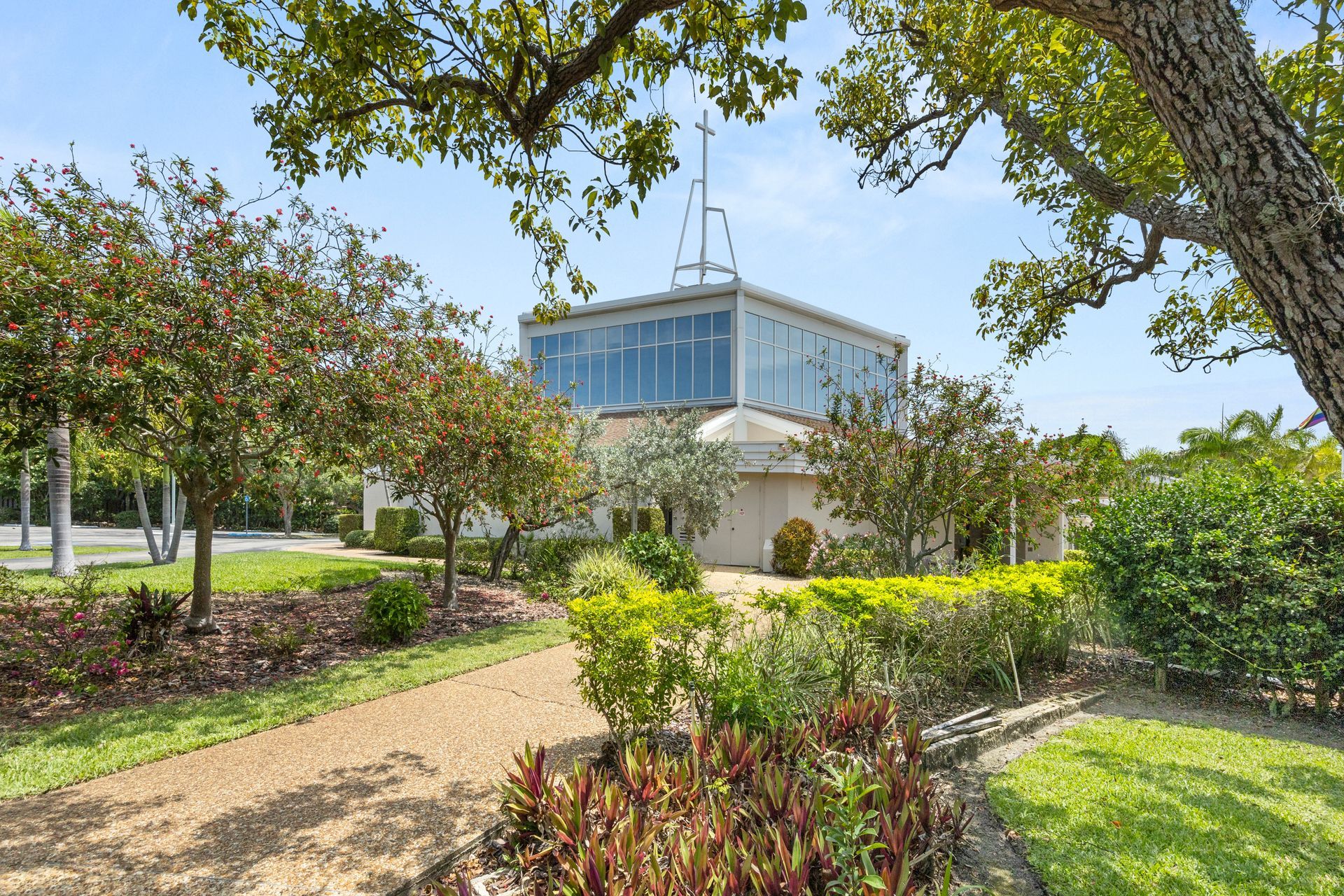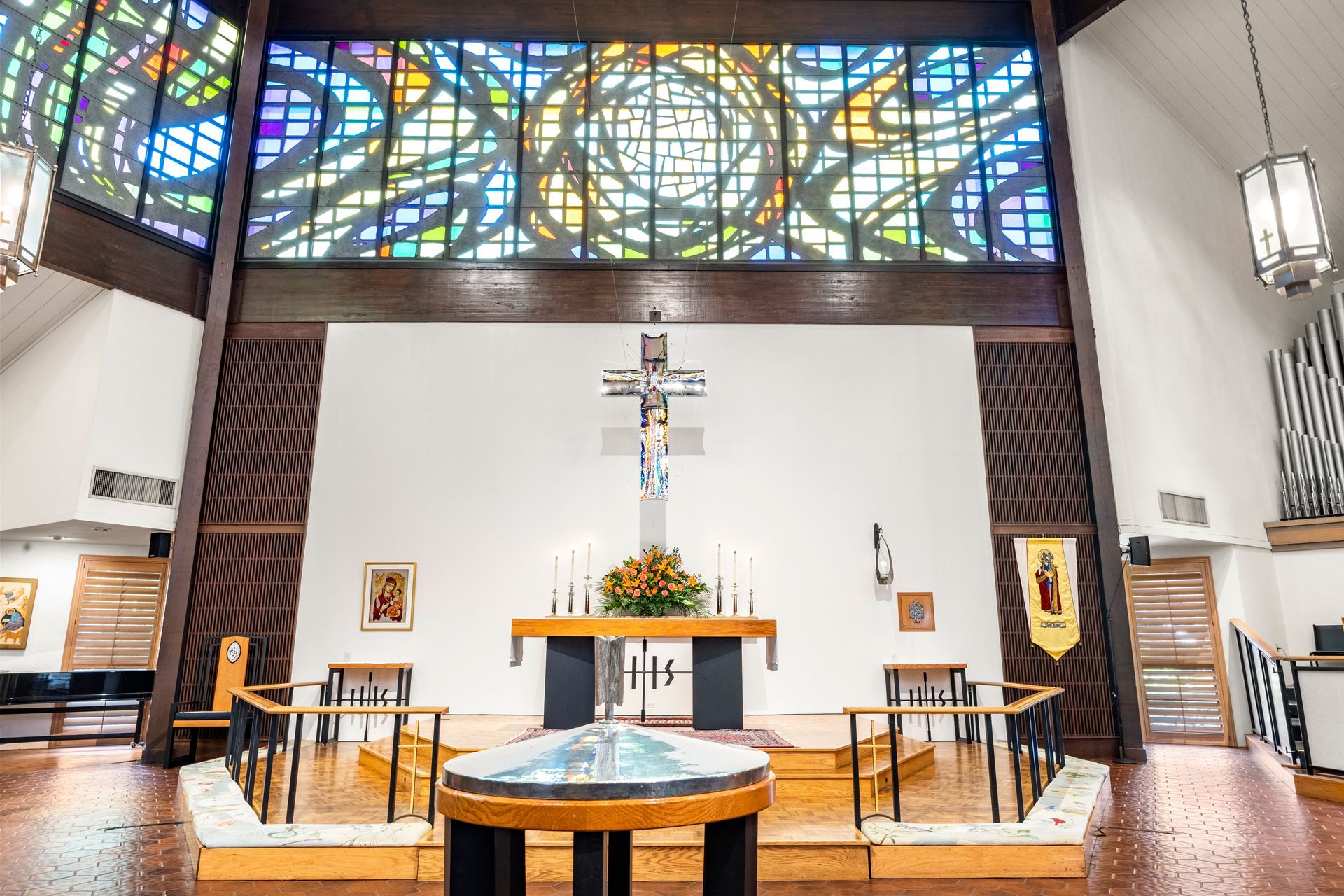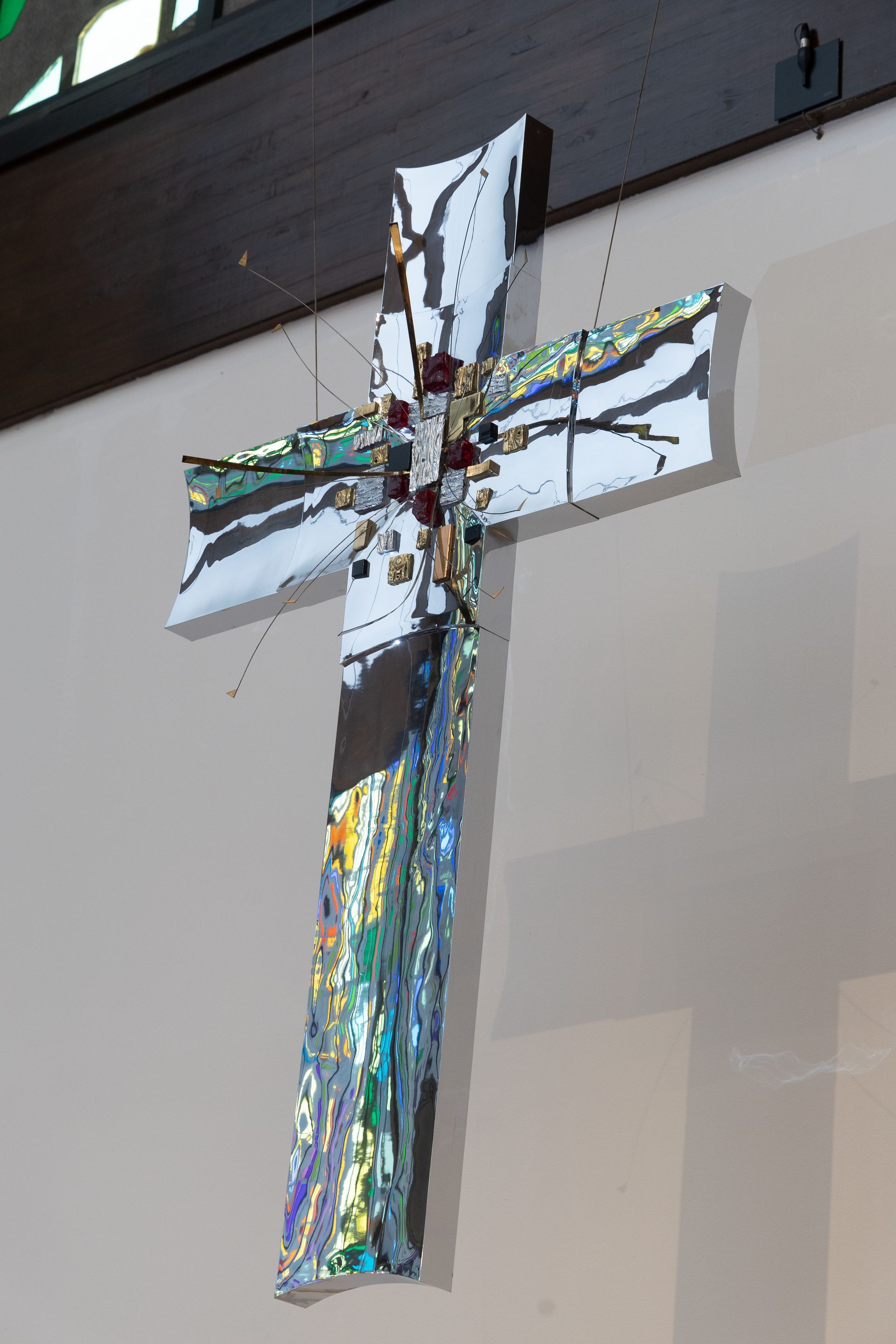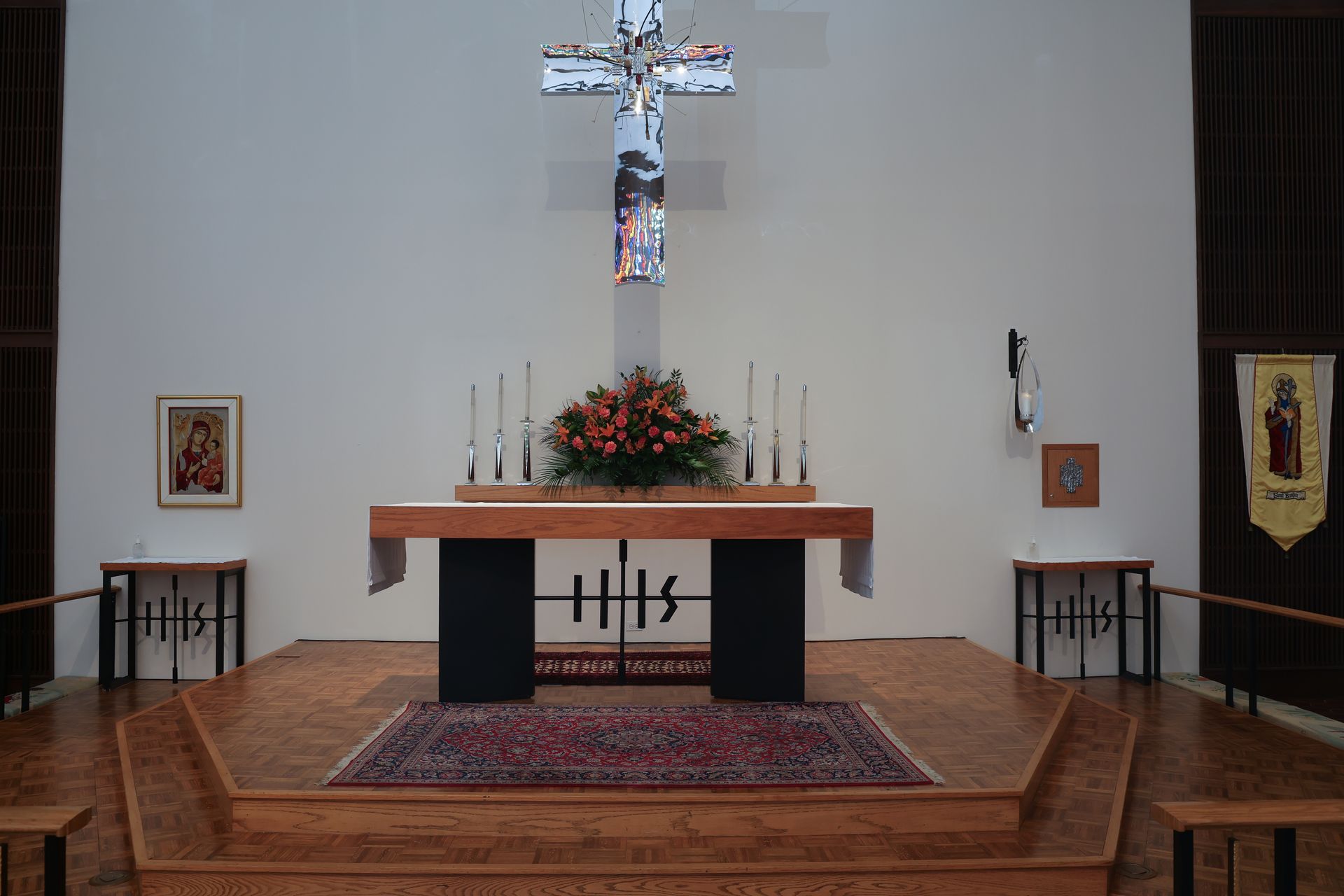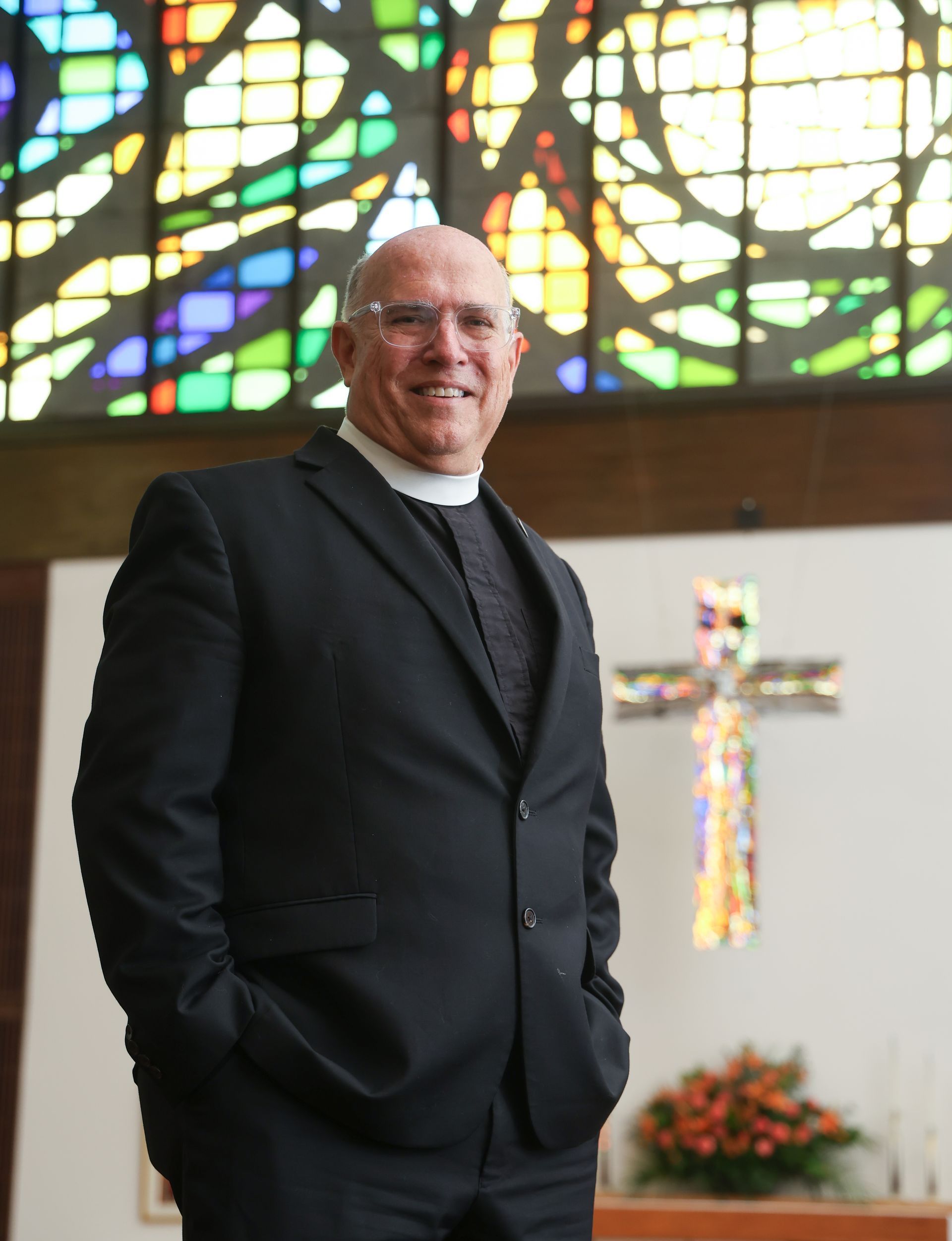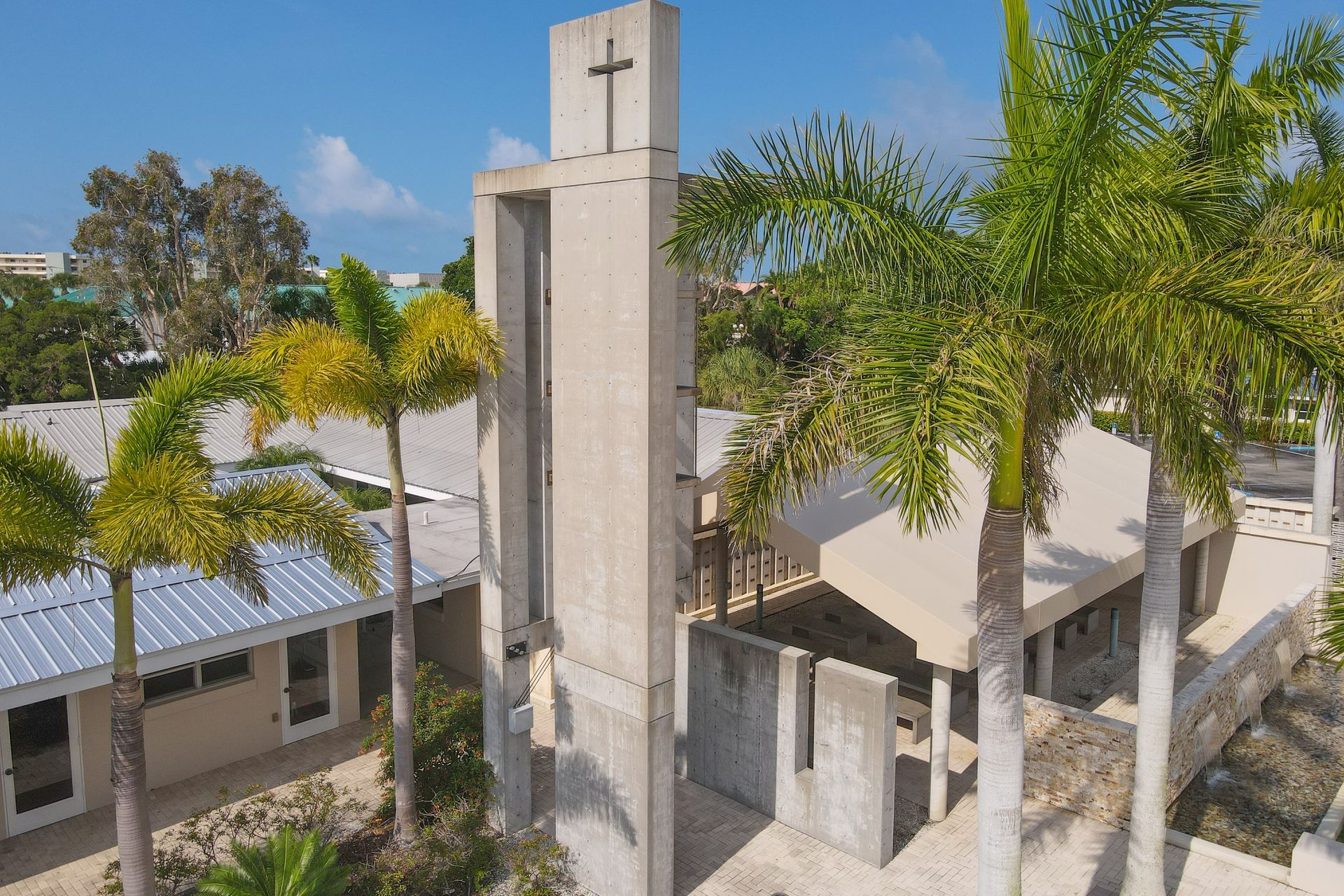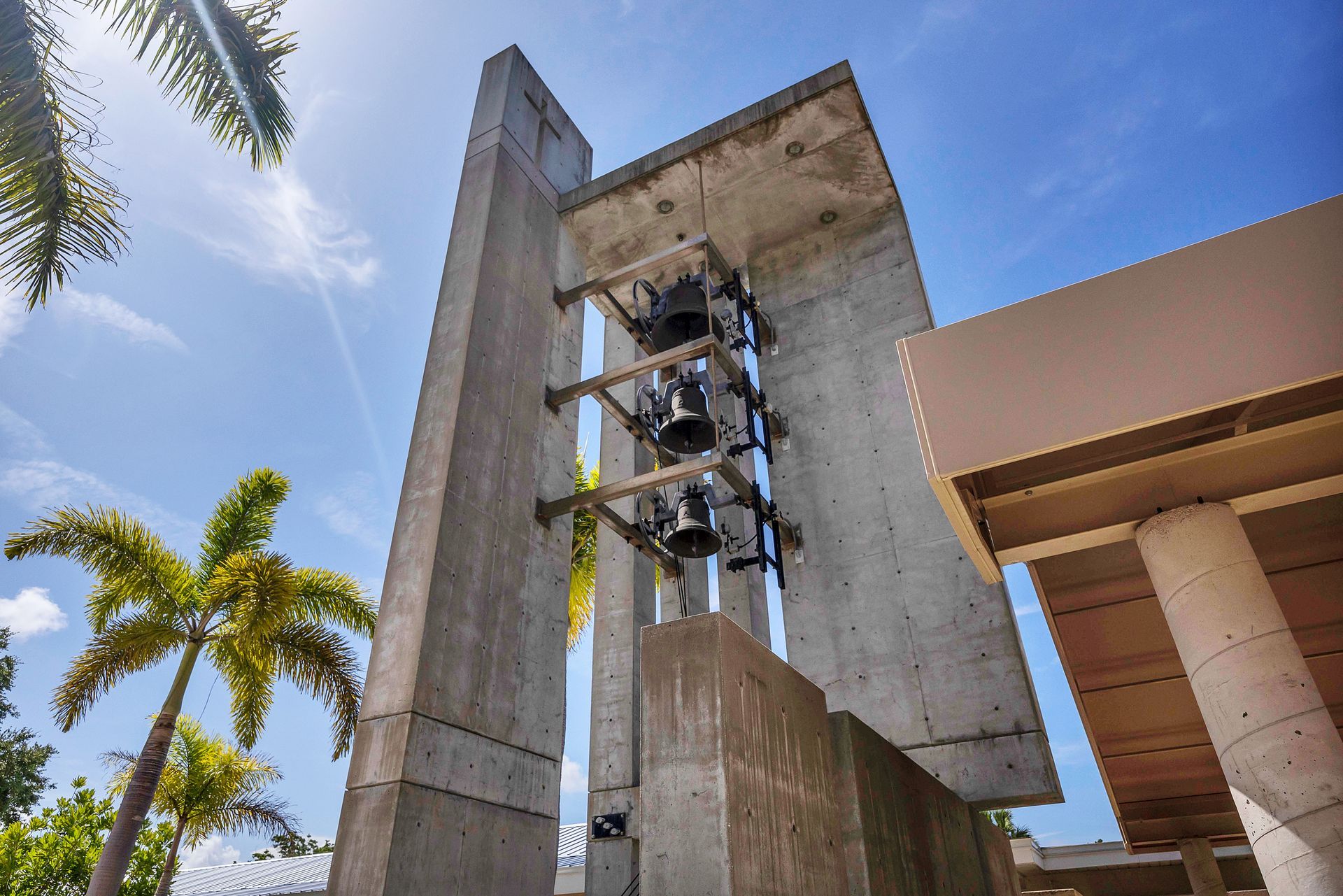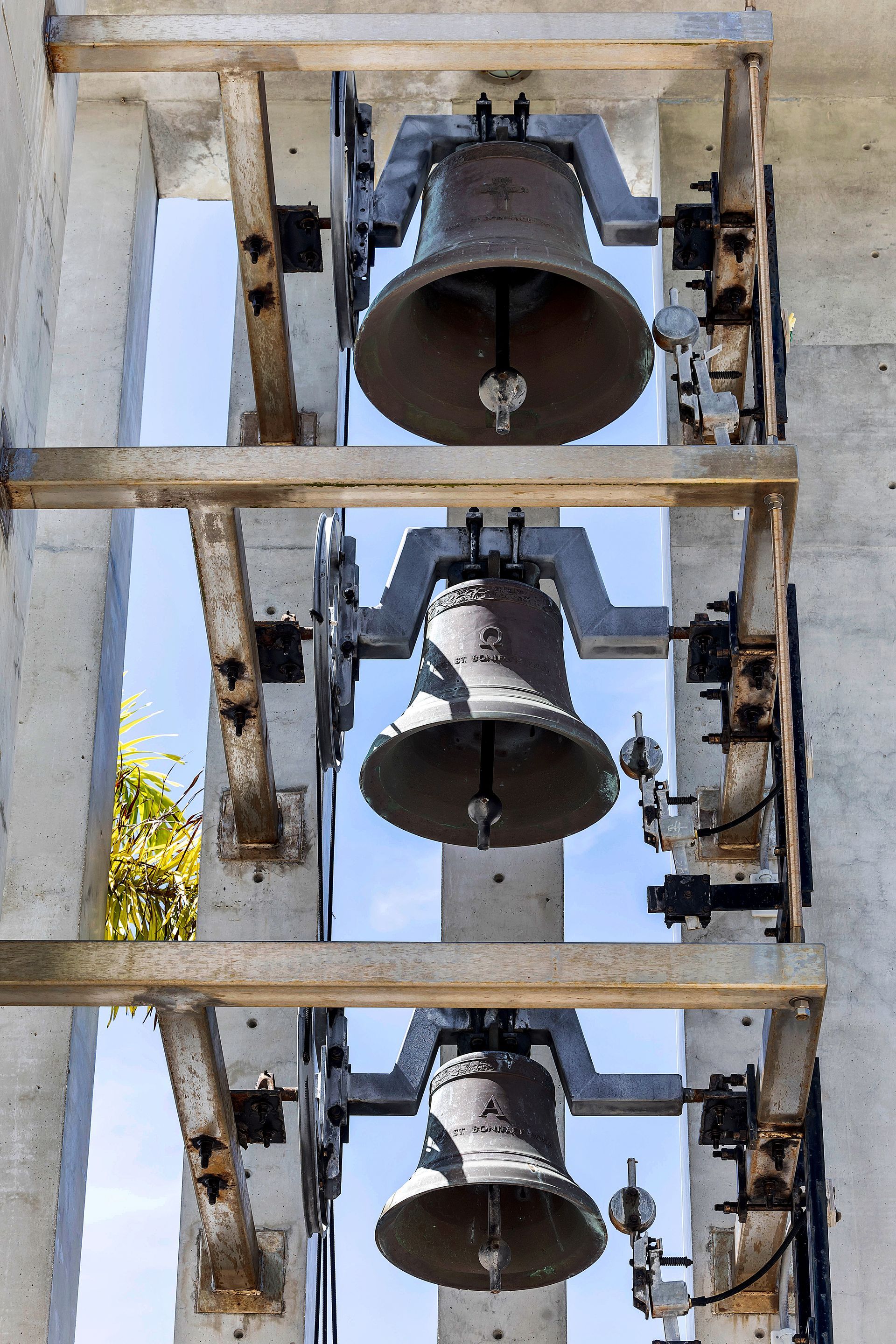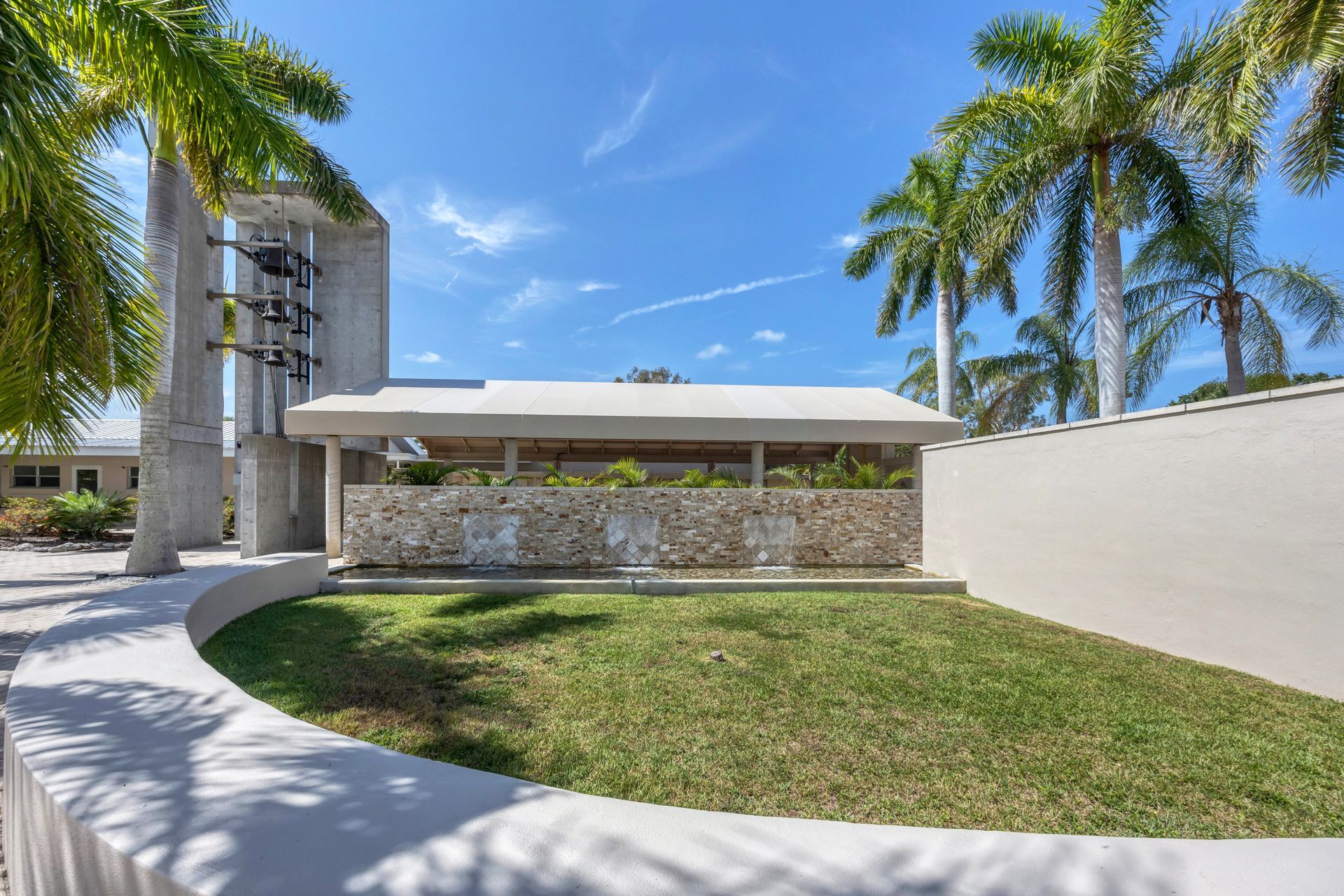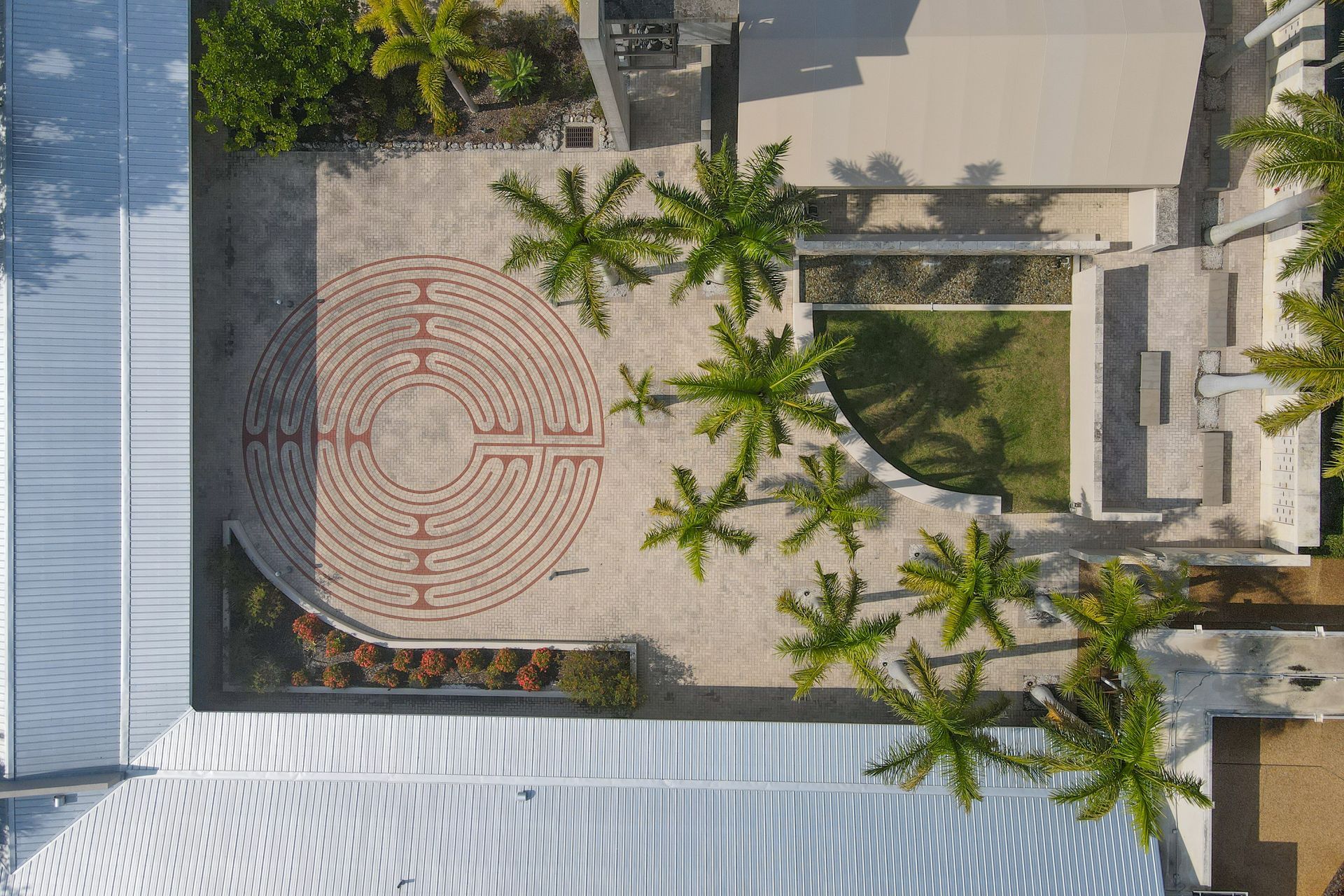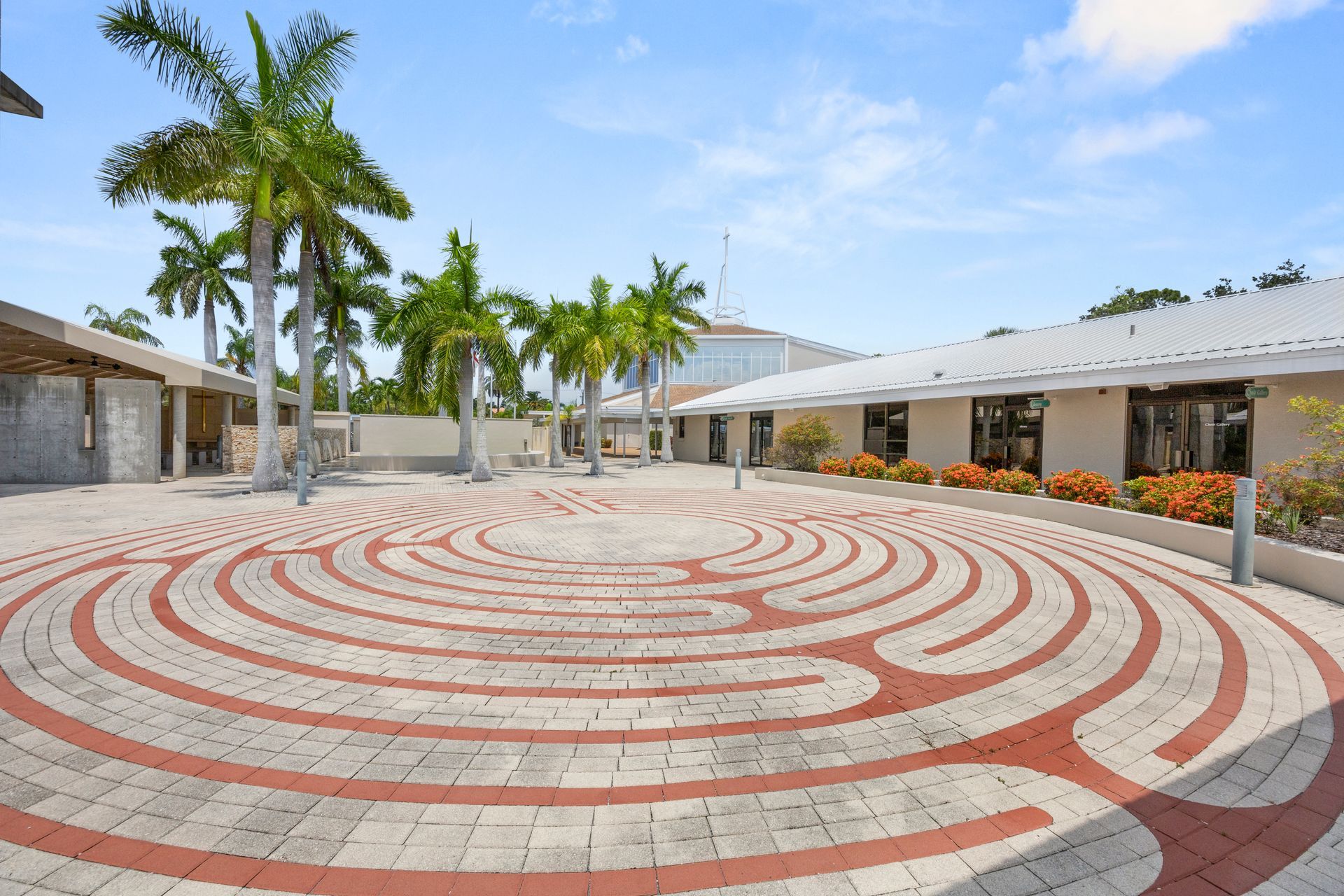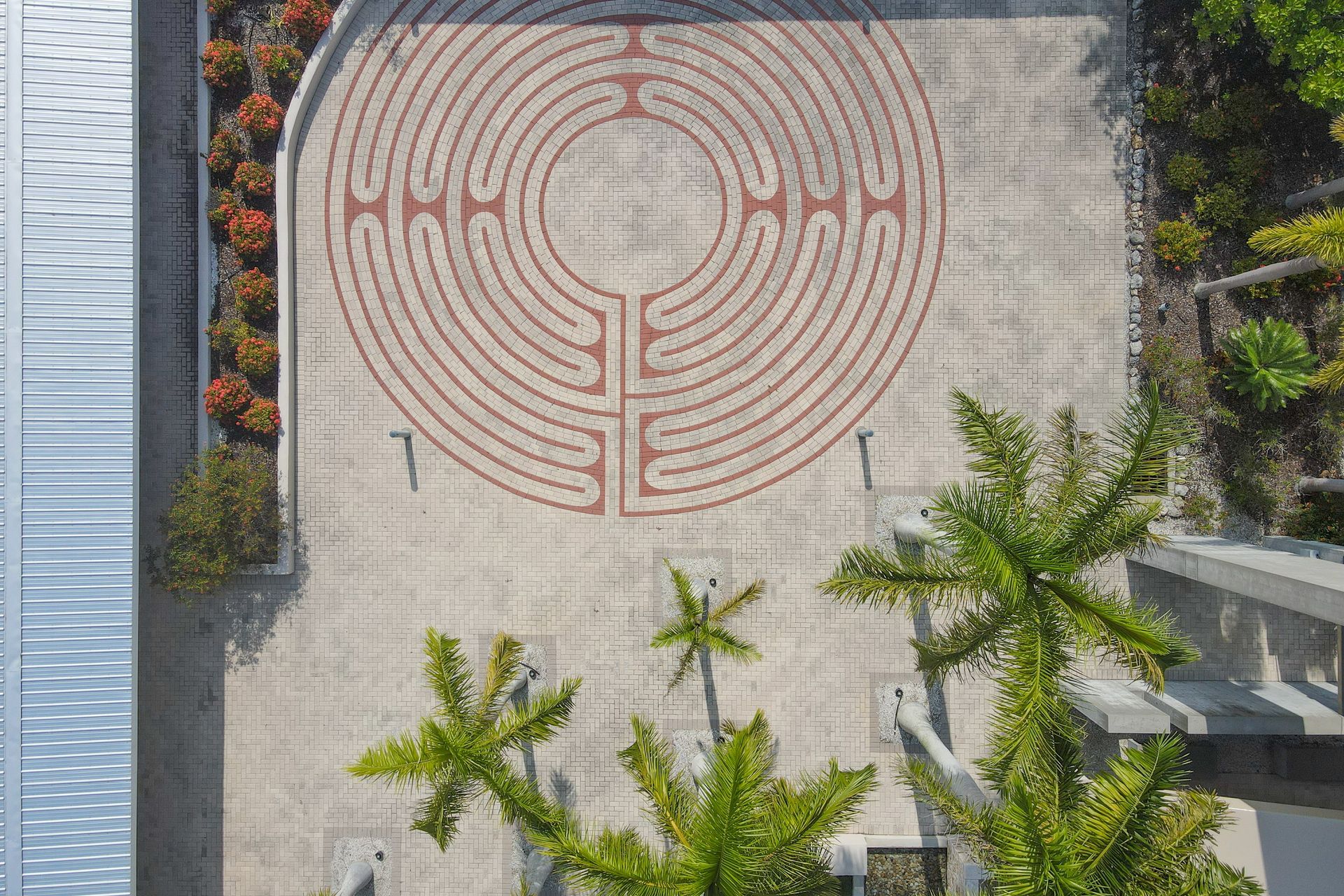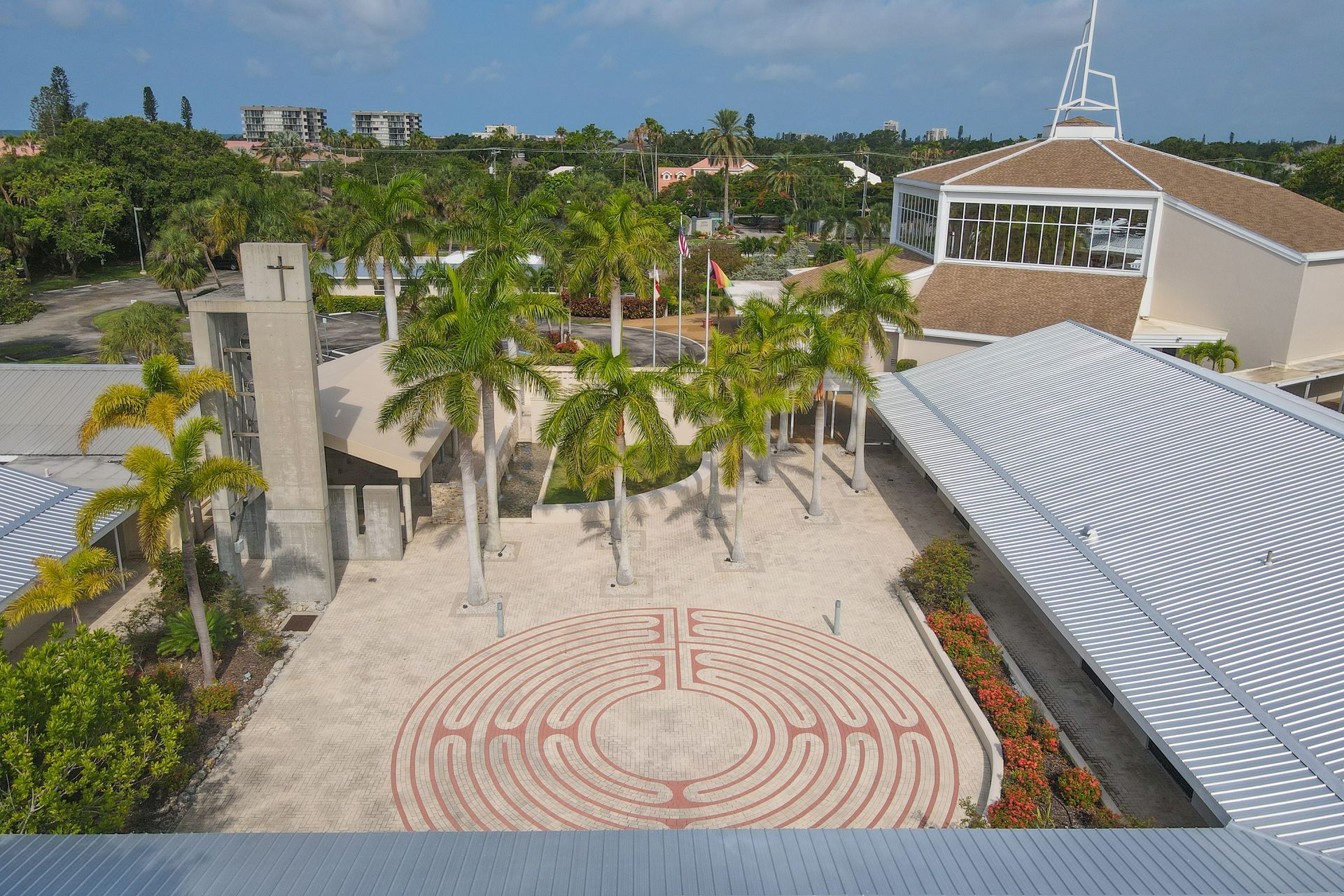History
History of St. Boniface
St. Boniface Church began as an Episcopal mission in 1954 with the first services in a storefront on Midnight Pass Road on Siesta Key. Even though the Key was relatively undeveloped at that time, the average attendance at Sunday services was 66, and interest was high enough to apply for a charter within four months of operation. Property at the current site was purchased in 1956, and the first building was in operation by the middle of 1957. The original rectory, now the church office building, was added in 1958.
In 1962, St. Boniface Church achieved parish status and more facilities soon followed: class rooms, a parish hall, nursery, kitchen, enlarged sacristy and a new building for the Healing Mission were all added during this period. By 1965, the Parish had grown to approximately 775 communicants.
The decade from 1969-1979 saw gifts that established a Columbarium on the property, expansion of the Healing Mission, and the addition of new community service and outreach programs, many of which are still active today.
By 1979, planning began on a new church building designed to accommodate 550 worshipers at Sunday services. Construction was completed and the building dedicated in 1980. A major renovation begun in 1995 improved the building interior and exterior, changing the color on the building, roof, and interior ceiling, adding the new steeple cross, revoicing the organ, and remodeling to make the Chapel of Christ the King possible.
Our 50th anniversary was celebrated in 2004 with a commitment to "Building the Future." Major gifts were made for our fourth Habitat for Humanity house, a commitment to youth mission trips, the development of St. Edmund's Church, Arcadia and St. Margaret's Church, Sarasota and the building of a new parish hall at La Anunciacion in our companion diocese of the Dominican Republic. To mark our fifty years in this community, the main courtyard was redesigned by noted architect Guy Peterson. It is a plaza open to the whole community containing a classic Labyrinth for personal spiritual journeys and a modern bell tower with a peal of three tuned bells.
Today, St. Boniface Church is a resource parish, one of the leading churches in the Episcopal Church and the Diocese of Southwest Florida. Our year round membership of more than 1200 people is joined by hundreds of regular seasonal residents and many visitors.
Whether you are a visitor or a long time member, you are always welcome in the house of God of this community.
St. Boniface Rectors
| Number | Name | Start Year | End Year |
|---|---|---|---|
| 1 | The Rev. Leon Bruijn, Vicar | 1955 | 1957 |
| 2 | The Rev. Howard S. Hane, Vicar | 1957 | 1961 |
| 3 | The Rev. John E. Large, Rector | 1961 | 1971 |
| 4 | The Rev. Joseph G. Drawdy, Rector | 1972 | 1975 |
| 5 | The Rev. David E. Johnson, Rector | 1976 | 1985 |
| 6 | The Rev. William D. McLean III, Rector | 1986 | 1990 |
| 7 | The Rev. Edward M. Copland, Rector | 1991 | 2011 |
| 8 | The Rev. John C.N. Hall, Rector | 2013 | 2015 |
| 9 | The Rev. Wayne F. Farrell, Rector | 2016 | 2025 |
| 10 | The Rev. Nikki Seger (Priest in Charge) | 2025 | Present |

Organ History
This instrument leads us all during worship and draws the community at large into our church through our concerts and recitals. The organ’s tonal design was inspired by both the instruments of Bach’s time and the great cathedral instruments built in 19th century France. The instrument also incorporates sounds useful for anthem accompaniment in the English-American Episcopal tradition, and ethereal effects suitable for the quieter portions of the service.
Architecture
Rising above the Nave is the sweeping array of the five great windows in the clerestory lantern. Constructed with the medium of faceted glass, the five panels each measure some eleven feet high and thirty-six feet wide. The windows are the design of C.A. Howard, stained glass artist of Wippell-Mowbray Studios of Exeter, England. Mr. Howard has developed in the glass the theme of God, the Creator of all things.
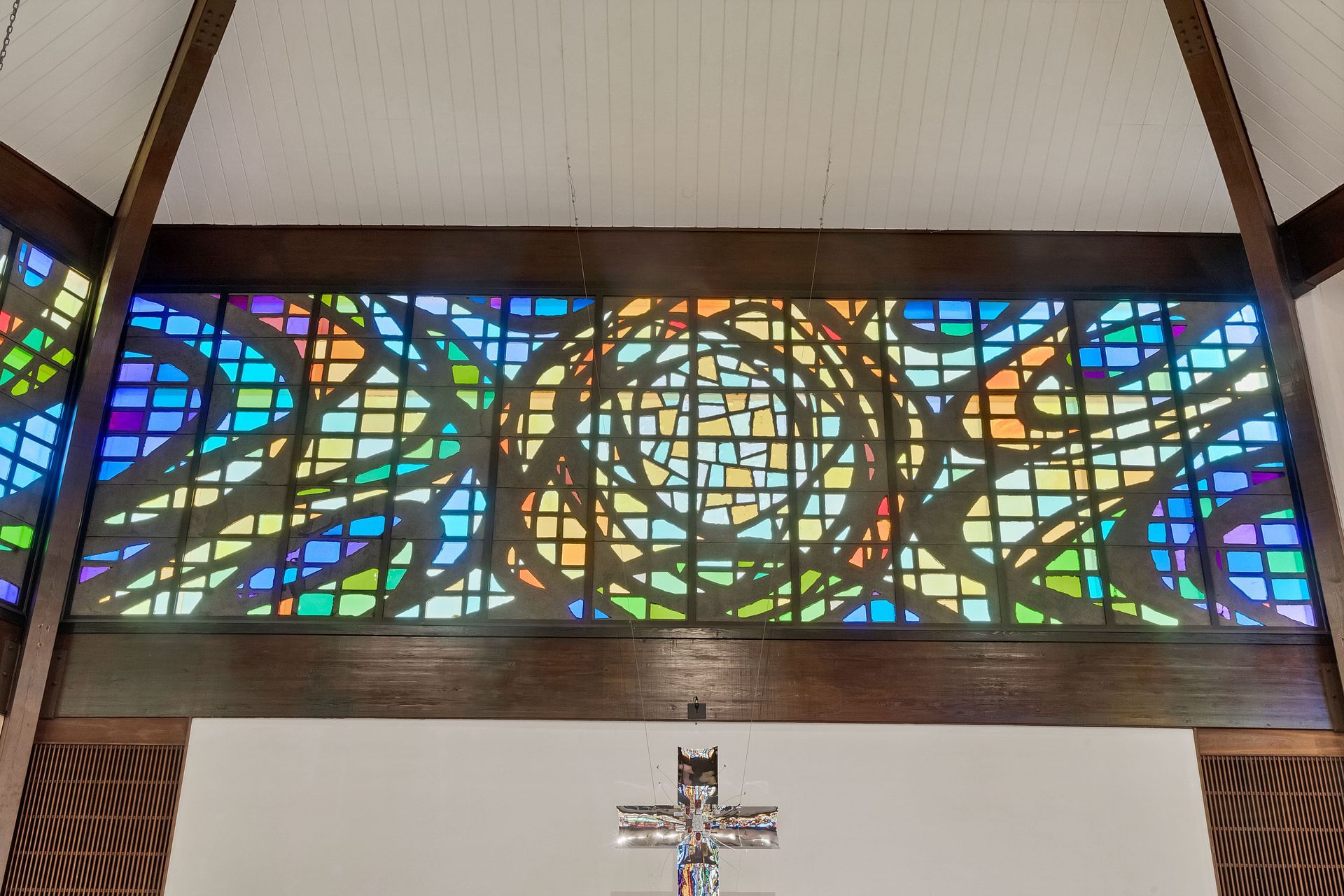
The Altar (East) Window
The great orb of light represents the light of God shining through the complex pattern of life here on earth. It portrays, as in the first chapter of St. John’s Gospel, the “all powerful” light which “shineth in darkness” and which “lighteth every man.” It is the light which gives joy, comfort and felicity, true saving knowledge, happiness and prosperity, support and deliverance. It represents God as the Creator of all things, who preserves and governs everythiny by His Almighty power and wisdom. The color of yellow, or gold, signifies love, constancy, dignity and wisdom. The great white light is emblematic of innocence of the soul, purity of thought and holiness of life. Human life and miracles of nature are in turn represented by the remaining four windows which symbolize Spring, Summer, Autumn and Winter.
The Spring Window
The artist has tried to give the feeling of the bursting forth of new life in all its forms. It suggests the joy of new creation and nature’s birth, including the birth of man. Everything is shooting upwards and being warmed by the Sun - The Sun of Righteousness. The “young” greens are symbolic of regeneration and the pureness of early life. The dark passage at the base of the window is indicative of the dark earth from which all things come, including man himself. The colors are indicative of fertility and all things new. They indicate young nature and nature reviving again and bursting forth, giving promise of the future, faithfulness and hope.
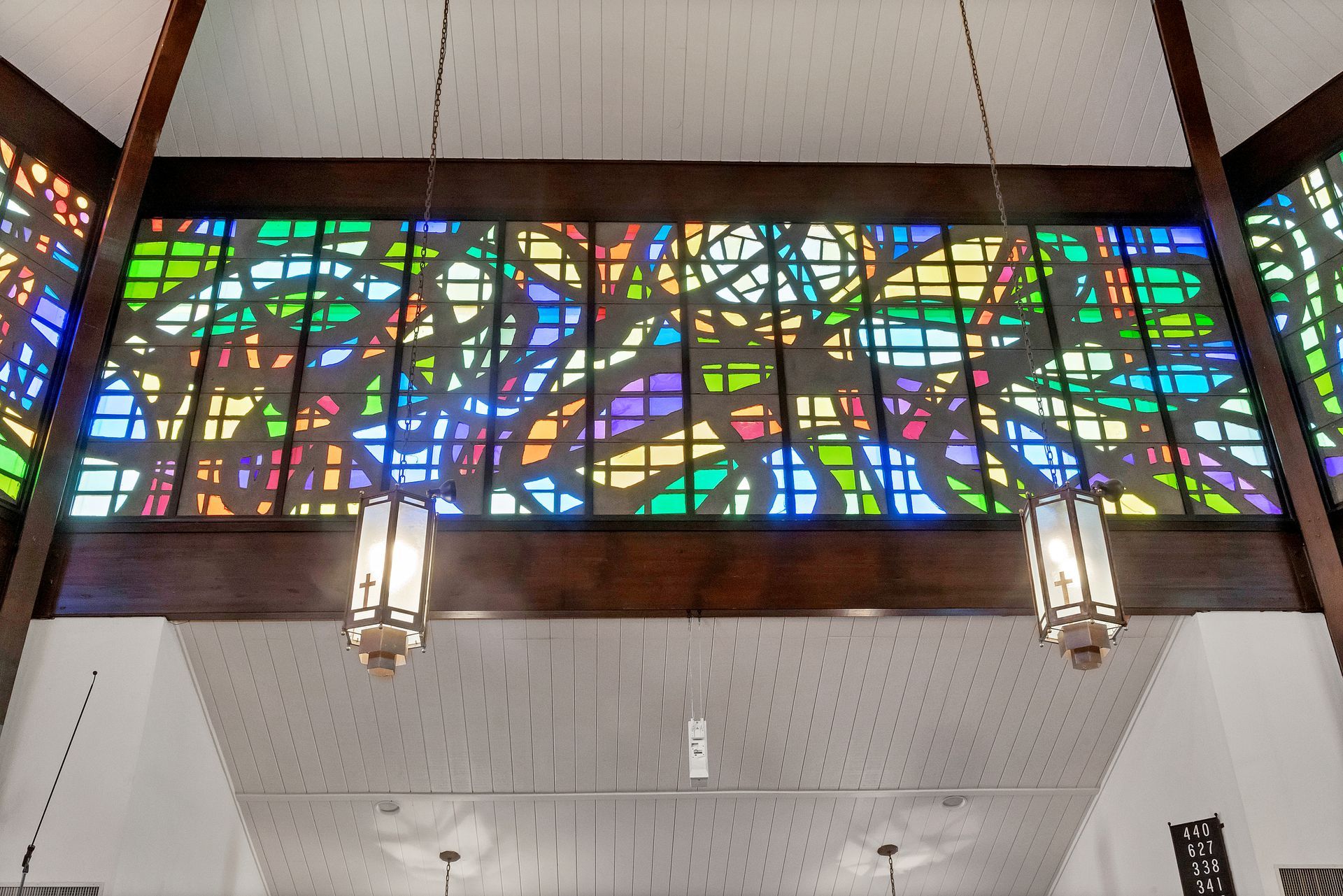
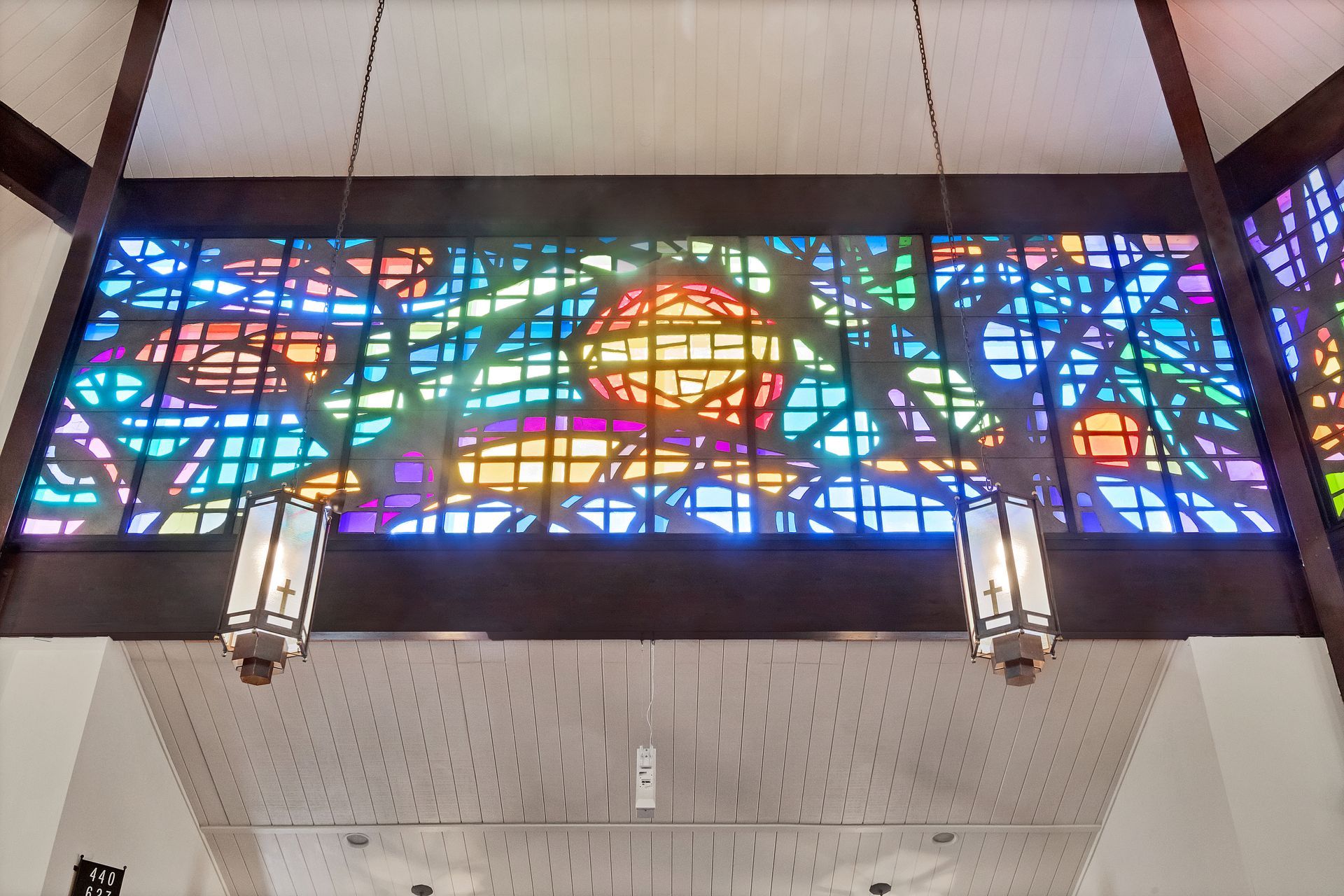
The Summer Window
The sun in this design is higher than the Heavens and symbolizes the Law and Presence of God and His Glory. It is the season when the sun shines most directly upon any region. The warmest season of the year. “The course of nature is the art of God” (Young) and Chaucer calls nature “the Vicar of the Almighty Lord. Earthly light progresses and the colors are warmer - signifying energy, courage and prosperity. The red symbolizes burning zeal for the Faith. The window endeavors to show nature at its peak of perfection and is symbolic of the period in the life of man when he is in his prime. The artist has tried to convey the feeling of nature in its abundant profuseness.
The Autumn Window
The “season of mists and mellow fruitfulness” when all is resplendent. The colors in this design have ripened to the golds, browns and reds of Autumn. The sap has started to return to its roots and the leaves start to decay and fall. The movement is now reversing the directions of life’s passage indicating a return to Earth. It is indicative of that stage of the life of a man when he starts his own downward journey to old age and decline. In this window the artist tries to convey the feeling in semi-abstract form of falling and flying leaves and ripe fruit using the “decaying” colors of nature, while the sun begins to lose its power, heat and the radiance of summer.
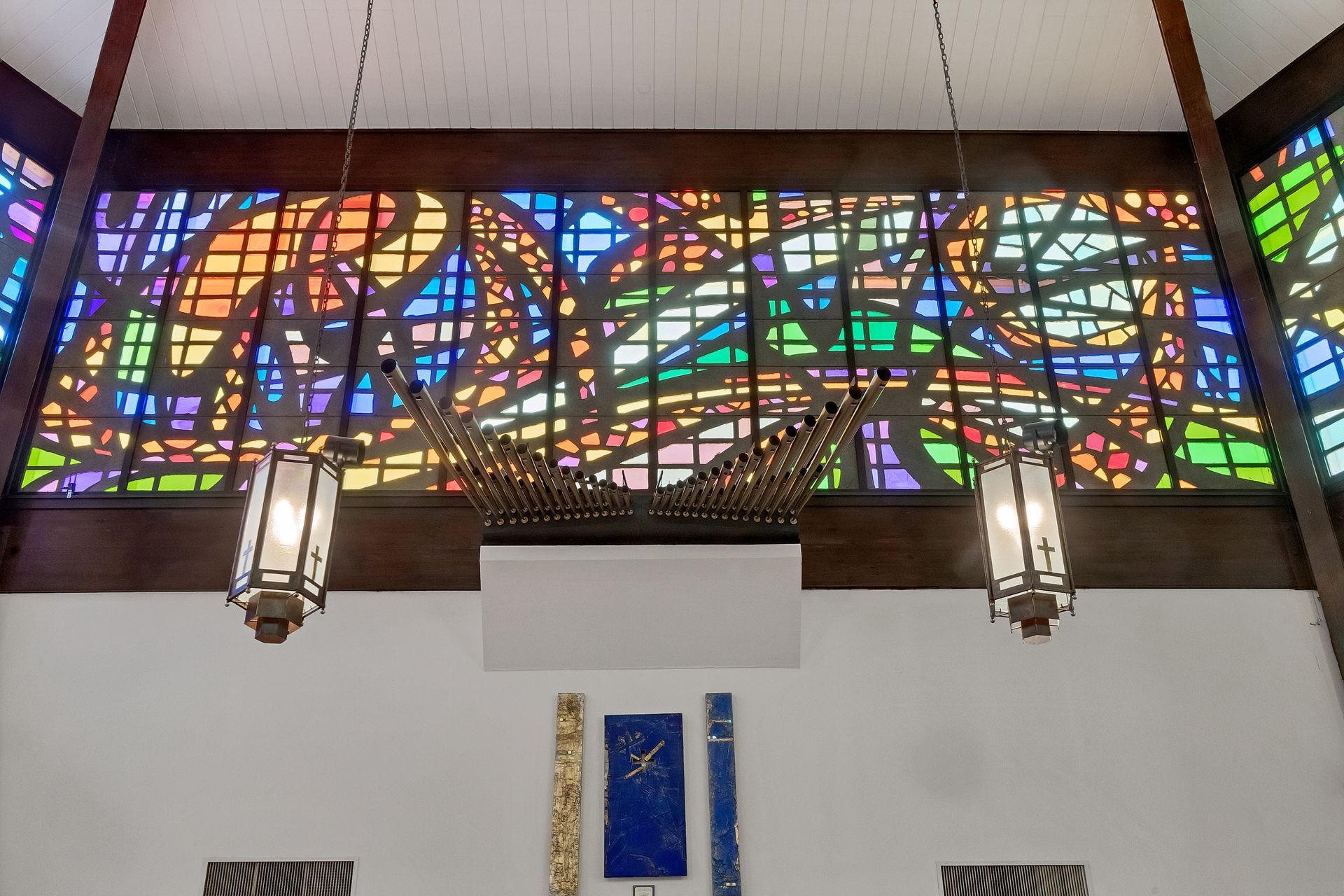

The Winter Window
The season of snows, rain, wind and darkness, symbolic of the storms of life through which Man has passed on his journey through life. It is the season of decay and symbolizes the end of man’s span of life here on earth. The sun is low on the horizon, about to commence the cycle of regeneration. Also, it is symbolic of the life of Man when he, too, returns to his maker to “lie dormant” in his grave until the Resurrection day when he will be called to his glory in the Celestial Kingdom and to his “new life.”
It is fitting that the sixth bay, the void between the Winter window and the Great Orb of the Altar window, is filled by rank upon rank of the silver voices of the organ, voices through which the breath of God rushes, speaking again and again in the glorious music of praise, the creative word of God, whereby we are called into new life in Jesus Christ, our Lord.

